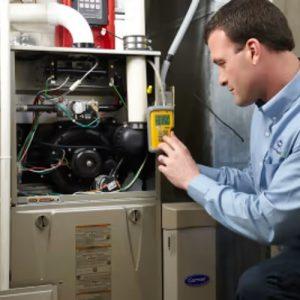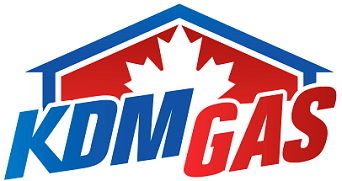 If your furnace is blowing cold air in your home, this is a sign of an issue with the flame detector, gas supply, air filter, pilot light, or condensate lines. Many of these issues are able to be easily solved on your own by sanitizing or replacing components in the gas furnace.
If your furnace is blowing cold air in your home, this is a sign of an issue with the flame detector, gas supply, air filter, pilot light, or condensate lines. Many of these issues are able to be easily solved on your own by sanitizing or replacing components in the gas furnace.
The Pilot Light is Damaged
If your furnace is blowing cold air, it may be a good idea to check the pilot light on your gas system to ensure it is working. The pilot light in your gas furnace is designed to ignite the burners to ensure your system is able to develop heat. It is common to have issues with the pilot light on older gas furnaces. We recommend following the instruction kit that came with your furnace to re-light the pilot.
Find the Pilot Light Assembly and Reset Toggle
If you’re looking to re-light the pilot light on your own, the first thing that needs to be accomplished is locating the pilot assembly and its reset toggle. The reset toggle is usually located near the bottom of the furnace. Please refer to your instruction kit if you are having issues finding the pilot light assembly and reset switch. After the reset toggle has been located, move it to the off position to deactivate the gas.
Dirt & Grime on the Flame Detector
Other types of gas furnaces do not rely on a pilot light to activate the heating process. Furnaces without pilot lights rely on flame detectors to ensure the successful completion of a heating cycle. If your flame detector is covered in dust, dirt, or grime, you will quickly lose heat and your furnace will start blowing cold air. This issue is able to be fixed by simply cleaning the flame sensor in your furnace. Or you may rely on our team of HVAC experts to sanitize the flame detector and restore the heating process.
Air Filter is Restricting Airflow
If the air filter in your furnace is covered in dust, grime, or soot, this will block incoming air from your gas furnace. Common signs of dirty air filters include long heating cycles and overheating issues. The average overheating issue will cause your heater to blow cold air throughout your home. To restore the flow of warm air in your house, we recommend replacing the contaminated air filter with a new one. Since the new air filter will not block airflow to your gas furnace, the unit will no longer overheat.
A Low Supply of Gas in the Home
If your heater is blowing cold air, this may indicate a severe issue with the gas supply line in your home. Your furnace is designed to deactivate if it’s not receiving enough gas to perform its standard heating process. Unfortunately, there is no easy way to fix this issue on your own. We recommend calling a professional HVAC technician to perform a gas furnace repair project.
The Condensate Lines are Clogged
Have you noticed your furnace is not working in your home? The latest state-of-the-art furnaces are engineered with condensate drain lines that aid with the removal of moisture. If there is a blockage in the condensate lines, this may deactivate the burners and cause the furnace to blow cold air into your home.
There’s Damage to Your Ductwork
The furnace may be blowing cold air due to holes and cracks in the ductwork of your home. These small to large openings allow cold air from your attic to enter the air ducts. Your furnace could be blowing warm air and working properly but could be leaking out by the time it blows out of your vents. Duct sealing could allow the warm air to reach the vents much more efficiently.
The Thermostat is Set to On Instead of Auto
If your heater is blowing cold air, we recommend checking the thermostat in your home to confirm it’s set to Auto. If your thermostat is toggled to the On setting, this will cause your furnace to continuously run throughout the day, even when it is not producing heat. Simply switch the thermostat setting to the Auto channel to ensure the gas furnace in your home will only run during the standard heating process.
